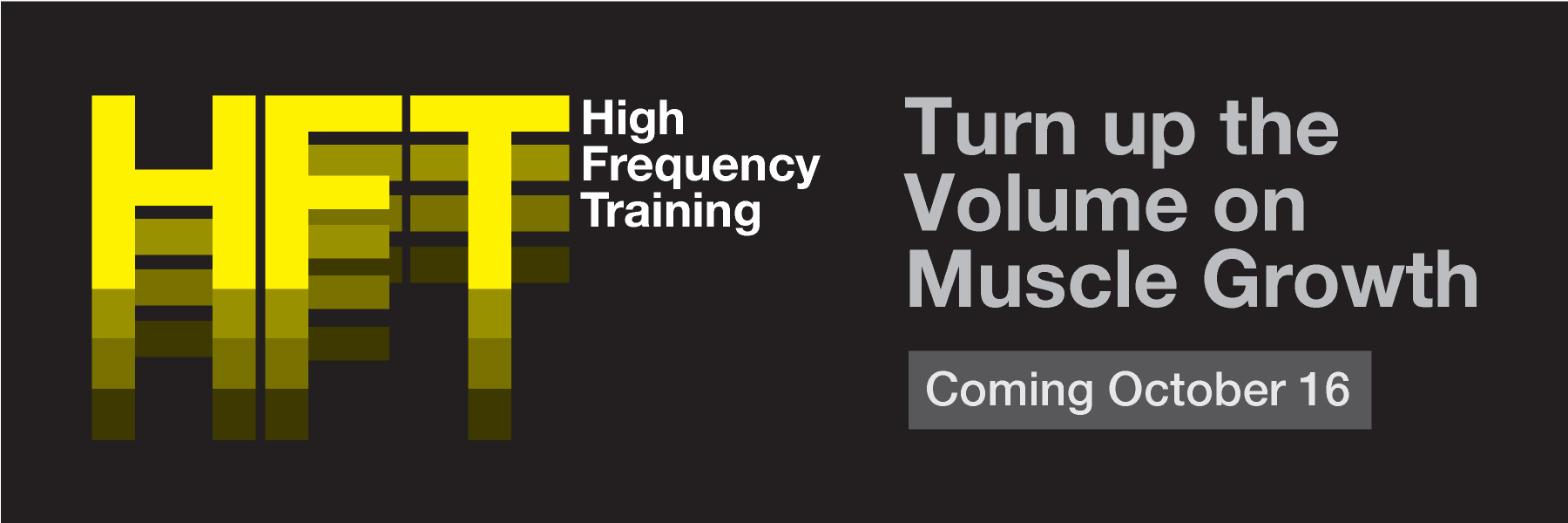You train hard and you’ve put on a decent amount of muscle over the years. But there’s a problem: certain muscle groups are still underdeveloped compared to the rest of your physique. Maybe it’s your biceps, calves or shoulders. The problem could be in any muscle group.
You already train the big compound lifts along with isolation exercises that target those lagging body parts. If your biceps are puny, curls are the answer. If your calves are reminiscent of a pair of pencils, you do standing calf raises.
That approach might have helped a little, but it didn’t help much. Those muscles are damn stubborn. You can’t figure out what the problem is because 3-4 sets of 8-12 reps with isolation exercises is what all the biggest bodybuilders are doing.
So you mix things up and add more sets, reps or new exercise variations. Nothing worked. Now you’re at a point where you don’t know what to do. It’s time to blame your parents for passing on genes that aren’t conducive to bulging biceps.
As a trainer, my job is to find a solution to this problem. I made many mistakes in the early years as I used the typical bodybuilding approach to bring up my client’s lagging muscle groups. But over the last 17 years I’ve been able to put the pieces together as I collected data and experimented with an unimaginable number of protocols to target muscle growth. Most didn’t work.
It wasn’t until I realized this essential fact: each stubborn muscle group requires a unique strategy to make it grow.
If you’ve been doing standing calf raises for high reps to build your calves, it probably didn’t solve the problem because the calves grow best from an intense yielding contraction like when you land from a jump. The quadriceps require an opposite strategy: they’ll build fastest with high volume work that emphasizes the concentric (shortening contraction) phase. This is why cyclists build such impressive thighs.
Of course, Olympic lifters build massive quadriceps with a different approach. The Olympic lifts necessitate a full squat with heavy loads as part of the snatch or clean and jerk. But If I tell you to start doing heavy Olympic lifts 5-6 times per week like they do, it would be a poor solution. Your knees and joints would get beat up in no time.
To fix stubborn muscle growth, it’s necessary to adhere to the following guidelines:
1. Train with a higher frequency: no one would argue that 30 workouts will produce more growth than five workouts. Training a muscle group more often will result in faster gains, provided you can recover. You must increase the training volume for that muscle group without overwhelming recovery.
2. Avoid most isolation exercises: if curls were the answer, every guy would have big biceps. Professional bodybuilders achieved their status because they were born with the ability to quickly build large amounts of muscle everywhere. If you apply their training parameters to your stubborn muscles, it won’t solve the problem.
The exception to this rule is the deltoids. It’s one muscle group that will grow from isolation exercises. I can tell you the solution to small deltoids in one sentence: do 100 reps of the standing lateral raise every day. Within two weeks you’ll realize it works.
However, virtually every other major muscle group requires a unique strategy. What works for the calves won’t work for the quads. What works for the pectoral muscles won’t work for the biceps. The pecs respond well to high rep sets, whereas the biceps typically get smaller with that approach.
3. Use a progression plan: a muscle will only continue to grow if you make it do more work over time. If you start doing 100 push-ups per day your chest will quickly get bigger. But after a few weeks it’ll stop growing because the body already added all the extra muscle it needs to adapt to that demand. That’s why it’s necessary to start with just enough volume to stimulate growth, and steadily increase it from there.
My system for putting these three components together to target stubborn muscles is covered in my upcoming ebook, High Frequency Training, available October 16.

Stay Focused,
CW

